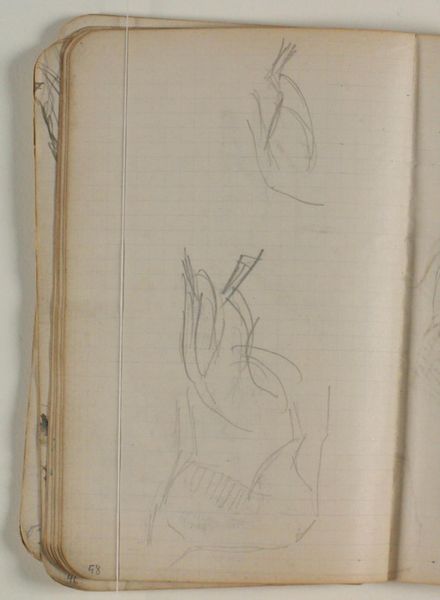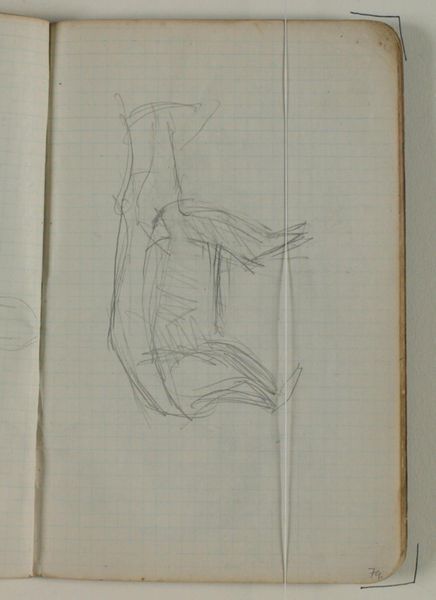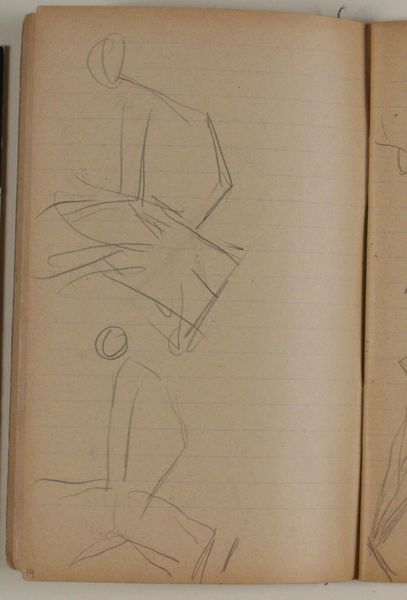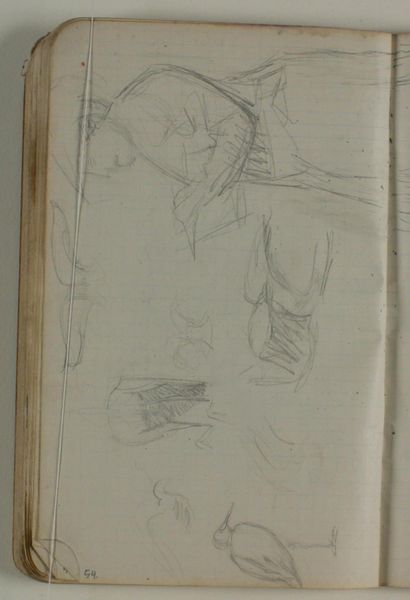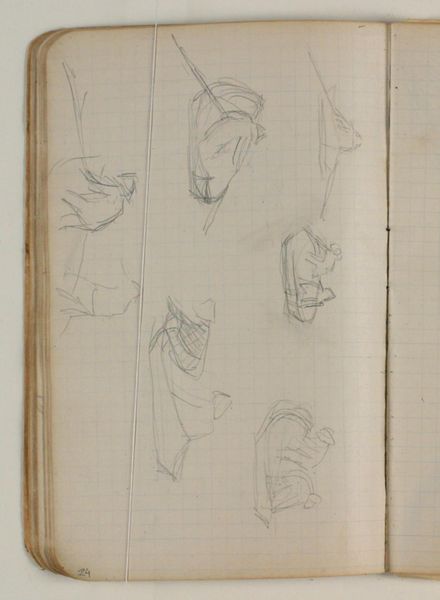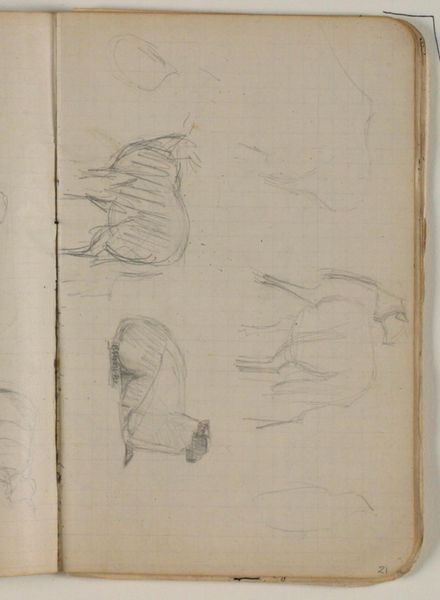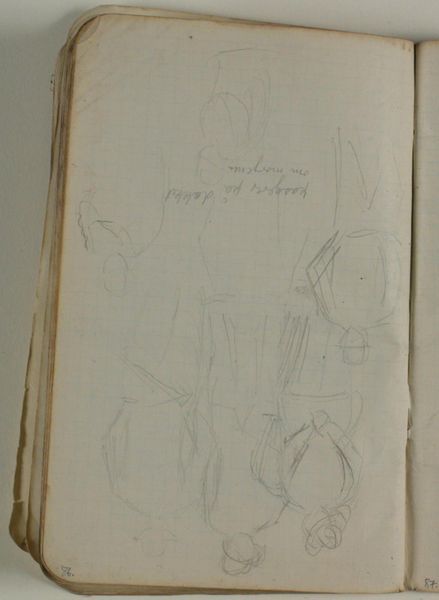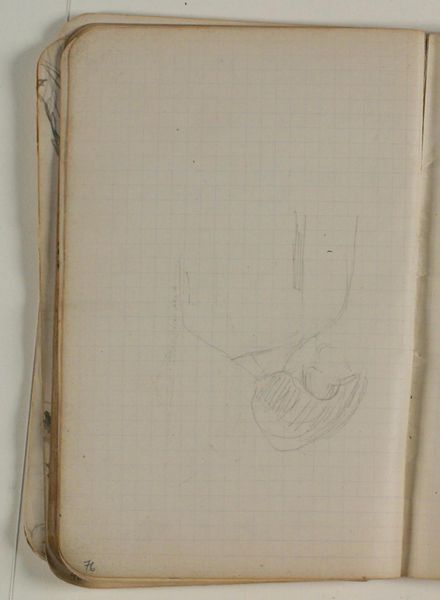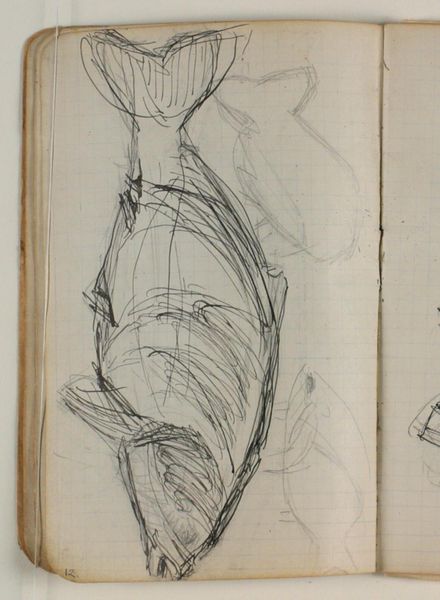
drawing, paper, pencil
#
portrait
#
drawing
#
paper
#
pencil
Dimensions: 169 mm (height) x 109 mm (width) x 5 mm (depth) (monteringsmaal), 169 mm (height) x 109 mm (width) (bladmaal)
Curator: I'm immediately drawn to the rawness of these sketches. They feel so immediate. Editor: Let’s take a look at Niels Larsen Stevns' "Skitser af hunde," created between 1905 and 1907. It’s a drawing in pencil on paper, held in the collection of the SMK, the National Gallery of Denmark. What’s striking to me is the utilitarian quality – the materials are simple, the technique direct. It’s pure observation, really. Curator: Utilitarian is a good word for it. It does feel unpretentious. Given the era, do you see the sketches as challenging established academic traditions or perhaps responding to new social relationships between humans and animals? Dogs as companions, rather than just workers, perhaps? Editor: It could be. It's fascinating to think about what paper and pencil meant at the time. They're tools for exploration, accessible in a way that oils and canvas weren't for many. This wasn't commissioned work, this was Stevns working through ideas, experimenting. The lined paper almost looks like the grid of a factory or a farm – contexts the animals might live or work in. Curator: Yes, I see the connection to the labor of drawing itself, the material of the paper being so fundamental. But, zooming out, how might these drawings function in relation to, say, shifting social attitudes toward domestic animals, which gained new representation in popular visual culture, sentimentalizing pet ownership as it intersected with class dynamics and anxieties? Editor: That’s definitely part of it. But to return to the object itself, you can practically feel the artist’s hand moving across the page. This wasn’t some idealized portrayal; these are real dogs, observed and recorded. I see him engaging with the tools of his trade. Curator: I agree there's a focus on immediacy, on Stevns’ direct engagement, but by virtue of it becoming art within a specific culture, there’s commentary about how and why some animals—in this case, dogs—are allowed into privileged spaces of visual representation. Editor: Fair point. These dogs are definitely beneficiaries of changing material circumstances and attitudes towards animals. Curator: Considering the sketches within that larger framework really helps me appreciate the complexity embedded within such simple materials. Editor: For me, it reinforces the importance of grounding ourselves in the immediate processes of artistic creation, appreciating the material reality behind any ideology.
Comments
No comments
Be the first to comment and join the conversation on the ultimate creative platform.
